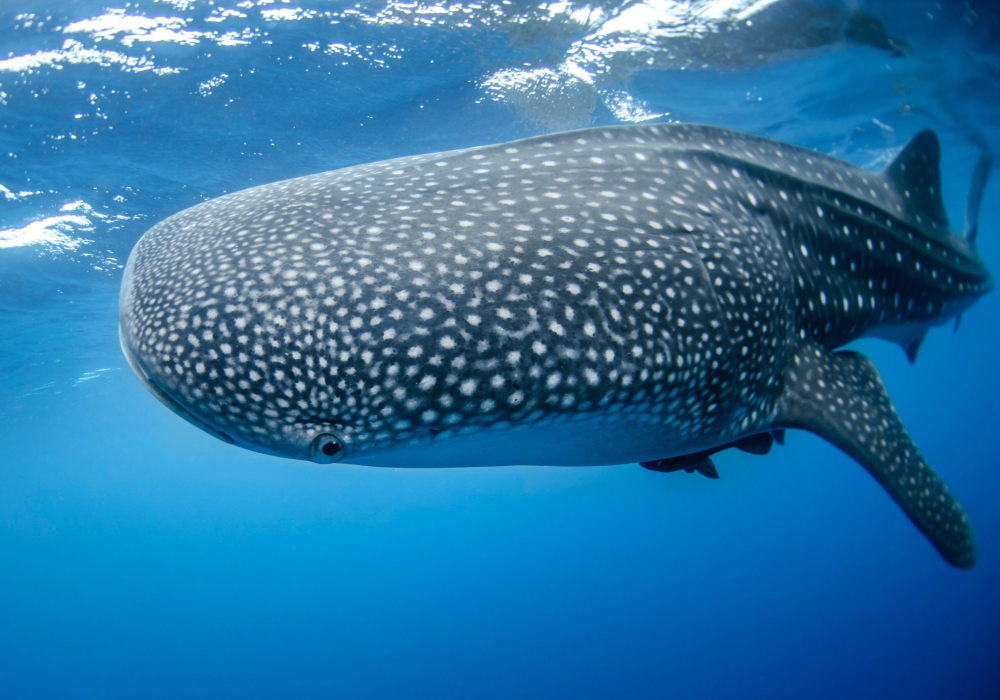“Tropical marine ecosystems are under mounting anthropogenic pressure from overfishing and habitat destruction, leading to declines in their structure and function on a global scale,” said Associate Professor of Marine Science Michael Berumen from the KAUST Red Sea Research Center (RSRC) in a paper co-authored with colleagues from Woods Hole Oceanographic Institution (WHOI).
Berumen heads the Reef Ecology Lab at KAUST, and the group dedicates itself to projects aimed at collecting data that will eventually be used to “guide the design and implementation of marine protected areas (MPAs) within Saudi Arabia and other study areas,” he said.
One theme the projects have in common is movement ecology. This subject has been used to study various types of Earth-bound ecological patterns ranging from human migrations based on land use to how animals adapt to various habitats and climate conditions. Applying this approach to marine ecosystems, seascape connectivity similarly tries to understand the interconnectedness between separate marine habitats. Why do certain fish migrate from one place to another? What regulates those spatiotemporal marine patterns?
Observing whale shark movements
In fishes, it has been observed that large-scale movements tend to be more common in larger animals like sharks. One of these RSRC research projects that began in 2009 focuses on tracking the movement of whale sharks.
 Royale HardenstineKAUST news sat down with Royale Hardenstine, one of the group’s Ph.D. students, to learn more about the ongoing whale shark tagging project.
Royale HardenstineKAUST news sat down with Royale Hardenstine, one of the group’s Ph.D. students, to learn more about the ongoing whale shark tagging project.
“Basically for the whale sharks in the Red Sea, the research that Professor Michael Berumen and the lab started back in 2009 was the first work coming out of the Red Sea on whale sharks. We do the majority of the work on the Red Sea whale sharks,” Hardenstine said.
The Reef Ecology Lab works in collaboration with the Marine Megafauna Foundation (MMF) based in Mozambique. And some of the acoustic telemetry tools used by KAUST in the Red Sea were employed to assist with research in Tanzania, where 30 whale sharks were tagged in Kilindoni Bay.
Hardenstine, who has long been passionate about the oceans, had a watershed experience while working on a whale shark aggregation in Tanzania during a semester as part of her undergraduate studies at the University of New England in Biddeford, Maine, U.S. She worked on an independent photo identification database project on Mafia Island in Tanzania.
“After I left, I was hooked on whale sharks,” she said.
“I was looking for Tanzanian whale sharks on Google Scholar and an abstract from the International Whale Shark conference that happened three years ago popped up. It was by Fernando Cagua, Jesse Cochran, Michael Berumen and the MMF group. 'Who are these people?' I wondered. I automatically started Googling further and came across KAUST and the RSRC website,” she recounted. “I knew that was where I had to go.”
Various tagging techniques
Soon after contacting Berumen and applying to the University, she joined KAUST as a master’s student. Since graduating with her master's degree last December, she has continued on at KAUST as a Ph.D. student. She’s currently working on studying a seasonal aggregation of whale sharks located near Al-Lith in Saudi Arabia.The KAUST tagging program is among the world’s largest whale shark tagging programs. In the program, KAUST scientists use acoustic and satellite tags to track the whale sharks' movements. To date, they’ve tagged over 100 whale sharks.
“Our whale shark season starts up in mid-March and runs through mid to late May, so it’s about a three month season,” said Hardenstine.
It’s not clear why the aggregations happen there in particular, but it is believed to be mostly food attracting them.
“We know that it’s a feeding aggregation. The majority of the time we see the sharks, they’re up at the surface and they’re eating dense patches of plankton,” she explained.
An interesting characteristic of the Red Sea whale shark aggregation is that there is an even split between males and females. The aggregation in Tanzania, like most aggregation sites around the world, is heavily male dominated at about 87 percent.
Because of the tagging data, it’s also known that the Al-Lith whale shark aggregation leaves the area after the three month season. Most of the whale sharks go to the southern Red Sea, but some go their own way north to Egypt or even further south.
One of the tags used is an acoustic tag. Every minute or so, it sends out a ping that sends out a given tag’s specific number to acoustic receivers with hydrophones whenever the whale sharks swim within 500 meters or so. That data is collected at the end of the season. Berumen’s team has run this monitoring continuously since 2010, so the Reef Ecology Lab has a rich set of data from these acoustic tags.
Another approach to tracking the sharks’ movement has utilized satellite tags. The satellite data can reveal where the sharks have gone throughout parts of the Red Sea and beyond. These tags drop off the whale sharks after a few months. While the acoustic tags can confirm that the whale sharks leave after the three month season (since the pings cannot be recorded if too far away from the receivers), the satellite tags can tell scientists where the sharks go outside the coverage area of the receivers.
“This is how we know that they tend to hang out in the southern Red Sea,” said Hardenstine.
Lu Sun, another Ph.D. student from the same group, has also been working with dead reckoning tags. These are 3-D tags that have accelerometers in them. They are placed on a whale shark for a couple of days, at which point they pop off. Once they are retrieved, the 3-D tags offer some interesting data about the more fine-scale movements of the sharks at the aggregation. They provide information about the animals’ diving angles, timing and frequency, as well as how they turn directions in one way or another.
A collective effort
Hardenstine’s first experience with whale sharks in Tanzania has proven to be valuable preparation for another key approach used by the Reef Ecology Lab. The pattern of spots and stripes on each shark is unique, acting like a “fingerprint” to characterize each individual.The KAUST team still relies heavily on these photo-IDs to track individual sharks that return year after year, or to identify sharks that may have visited other aggregation sites, such as in Djibouti.
There is a strong “citizen science” component to the collection of photographs, something that Berumen notes has truly elevated KAUST’s whale shark work. “We are extremely grateful to all the members of the KAUST community that routinely share photos of whale sharks with us,” Berumen said. Hardenstine adds, “The KAUST community support and involvement has directly helped us ID many more individuals than we would have own our own. Of course, it also means many more hours of work for me, but that’s a great problem to have!”



